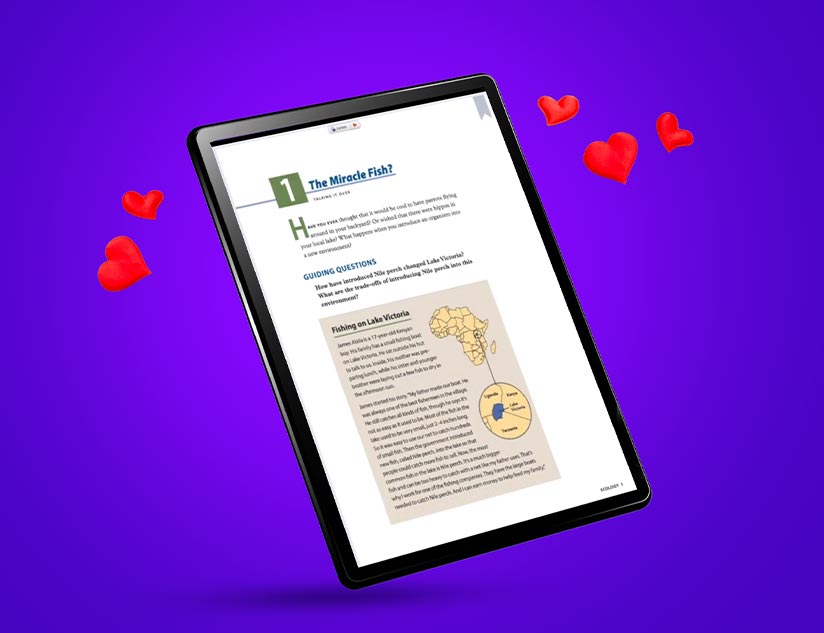The unexpected onset of the COVID-19 pandemic has led to huge financial losses, especially for nonprofits. They are facing financial challenges at a time when their services are needed most by society. Almost 75% of nonprofits have reported that their funding and revenues were negatively affected during this time. It is estimated that nearly one-third of them will close within the next few months due to the pandemic.
The aforementioned figures can help in understanding the gravity of the financial condition of these nonprofit organizations. While nonprofit leaders could be running away from the challenges, they are in fact, realizing the potential opportunities as they shift and adapt operations and services.
How Digital Learning Platforms Can Help with the Staffing Model
The COVID-19 pandemic has changed the needs of most nonprofit organizations. A significant impact of the pandemic has been on the training model of these organizations. Since it is difficult to currently provide in-person training, they are relying on digital learning platforms to remotely teach their members, employees, and volunteers. These digital solutions are proving to be an efficient and cost-effective tool in the effort to maximize employee engagement and effectiveness.
How the Platform Empowers Training
1. Reduces Training Expenses
Training expenses are a major concern for nonprofits, and they usually spend large amounts on infrastructure, travel, printed materials, and accommodation of instructors. However, the pandemic has made them realize the benefits of choosing virtual training resources offered by digital learning platforms. The most powerful platforms completely eliminate the need to hire on-site instructors, while offering 24/7 support to trainees and trainers. This increases efficacy by providing personalized learning pace (95%) and minimized travel (84%).
2. Reduces Training Time
Another advantage of using a learning platform is that you can deliver customized information to your workforce, pertaining to their job duties, skill sets, and roles. Research indicates that eLearning takes 40% to 60% less employee time than traditional face-to-face training and reduces training costs.
Additionally, a learning platform offers authoring tools that allow organizations to create high-quality content that is immersive and engaging. You can optimize this content for maximum knowledge retention through microlearning, videos, simulations, gamification and more.
Studies show that such active learning techniques increase retention rates by as much as 60%, compared to the 8%-10% retention rate of typical passive classroom training. So, along with great convenience, your employees can participate in online training activities whenever it fits into their schedule and speed up the knowledge transfer process.
3. Eases In-House Talent Development
Just like every other organization, nonprofits also have to make sure that their employees are not only skilled, but also constantly improving. With a digital publishing platform, you can develop and deploy custom-tailored training courses, so that your employees can quickly up-skill and cross-train. An IBM study found that employees learn 5x more material when they use digital learning techniques, compared to offline learning methods. So, your employees can access these online training resources to increase productivity in their current position and contribute to the organization.
4. Allows Advanced Reporting
Most digital learning platforms come equipped with custom analytics features that provide consistent reports on content consumption patterns and engagement levels. This allows for gauging the effectiveness of your online training strategy in real-time. For instance, if a report indicates that some of your employees are struggling with a compliance topic, you can provide immediate feedback and create a list of personalized resource recommendations. It will significantly improve the ROI of these learning resources.
Additional Benefits of a Digital Learning Platform for Nonprofits
1. Protected Centralized Storage
Using a cloud-based digital learning platform allows you to store all your online training materials securely in one place without wasting any space on your computers. This material is protected by data encryption protocols and sometimes even more advanced safeguards, such as IP blockers, anti-spam, antivirus, and restricted registration based on the domain. You can protect certain sections of the materials by restricting access to only admin and upper management.
2. Generates More Revenue
Using such platforms not only allows you to train your in-house employees more effectively but also sell your training resources online to the public/other organizations that need them for their staff members. It gives you an extra source of income that you can utilize to fund projects and better achieve your goals.
3. Expands Your Global Reach
Some nonprofits have members and volunteers working in different parts of the world. A digital learning platform offers an easy and cost-effective way to deploy localized as well as global training materials. With an end-to-end, cloud-based platform, you empower your worldwide workforce so that they can collectively tackle organizational challenges.
4. Offers Unique Brand Experiences
Choose a digital learning platform that can be customized with your organization’s logo, brand colors, and more. With eReader skin and eCommerce store customizations to choose from, you can give your users the true feel of your brand and stand out from the crowd.
Thus, a learning platform is the perfect solution for nonprofit organizations to tackle financial challenges, especially those pertaining to the training and skill development of employees. It can even help them increase revenue and improve their bottom line too.
MagicBox™ and its advisory team are ready to help you achieve the best possible results with their cutting-edge enterprise publishing tools. Contact us to know how we can help with customizing our award-winning platform to your needs.













